Ever stared at a sealed wooden piece and wondered, “Can I give this a new life with paint?” Let’s unlock the secrets to transforming sealed wood with a splash of color!
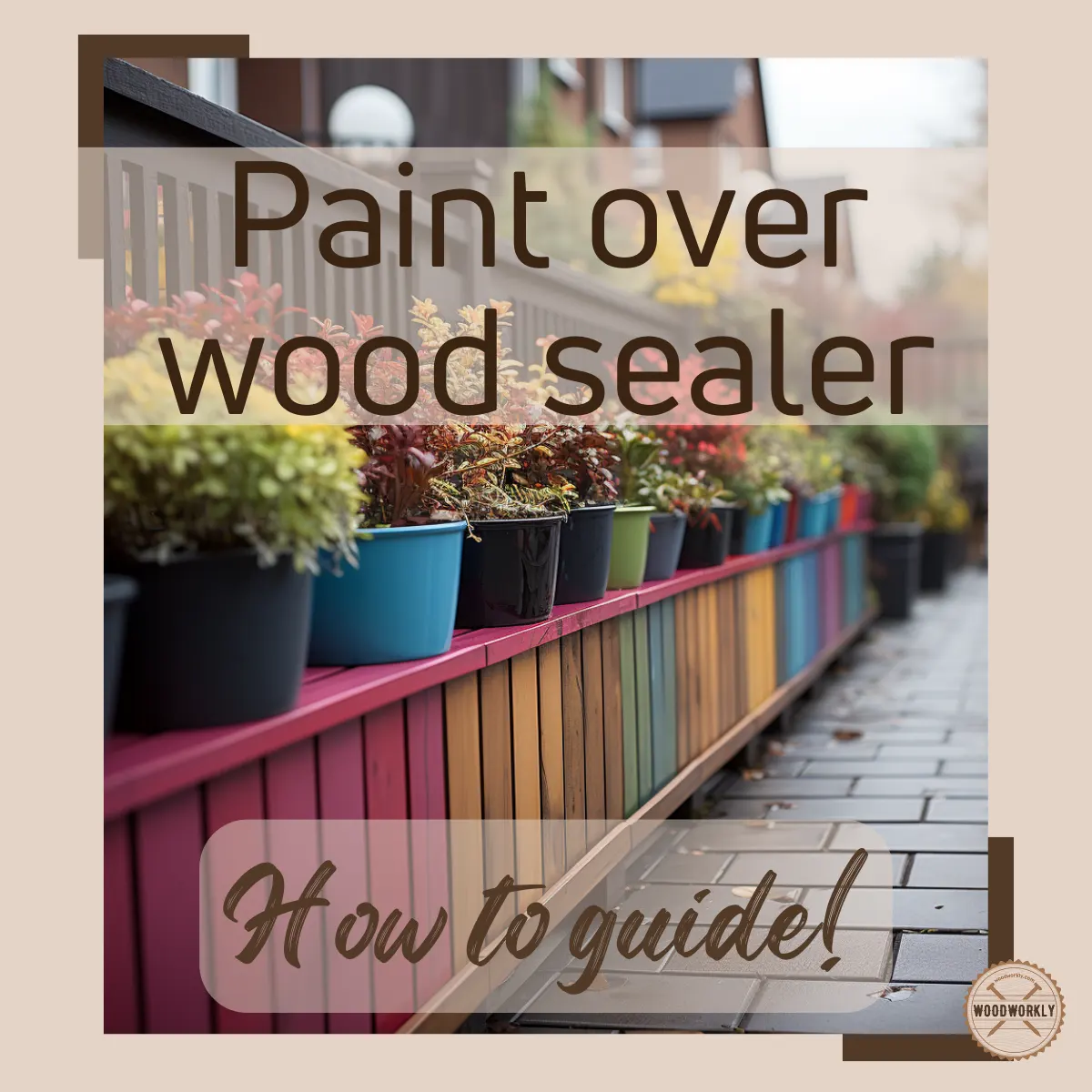
I can remember that, many years ago, as a beginner in the field, when I received my first project to refinish a wooden dining table that was coated in an old, glossy oil-based sealer, I wasn’t sure if I could paint over it at first.
Then I did some research and discovered the importance of proper surface preparation and today I am well versed about the topic thanks to the experts.

If you’re looking for a solution for the same kind of issue, you are in the right place. I’ll address this problem in depth based on my experience and the info I gathered from professionals.
Stay tuned with me.
Let’s find out, Can you paint over wood sealer?
Yes, you can paint over wood sealer by properly preparing the surface. This includes sanding the sealer, applying a compatible primer, and then painting with an appropriate type of paint, such as acrylic latex for best adhesion.
But there’s a lot more to know.
I’ll bring you a comprehensive description of the above topic along with some important background information and some important tips to follow.
Furthermore, at the end, I’ll answer some frequently asked questions as well.
Let’s dive in!

Can You Paint Over Sealed Wood?
You can paint over sealed wood, but there are a few steps you should take to make sure the paint adheres properly and the finish looks good.
How Long After the Sealer Can You Paint?
The ideal time to paint after applying a sealer is determined by several factors, including the drying time of the different sealers and environmental conditions.
Water-Based Sealers
After a water-based wood sealer has completely dried, you can usually paint over it.
You should wait around 24 hours before painting over water-based sealer, but check the product label for the manufacturer’s specific instructions, as drying times can vary.
Oil-Based Sealers
When compared to water-based sealers, oil-based sealers typically take longer to dry and cure.
You should wait at least 48 hours before painting over an oil-based sealer. For exact drying times, refer to the manufacturer’s instructions.
Polyurethane Sealers
Polyurethane sealers are more difficult to cure, often taking several days to a week before they are safe to paint over.
Exact drying and curing times should be found on the product label or in the manufacturer’s instructions.
If the environment has with high humidity, the time will be higher than expected.

Factors You Need to Consider Before Painting Over Wood Sealer
The effectiveness of your painting will depend on several things, including the type of sealer used and the type of paint used.
Sealer Type
The type of wood sealer you used is critical. Sealers such as polyurethane, varnish, oils (Tung oil, linseed oil, and Danish oil), and wax are used to protect the wood from moisture, stains, and other potential sources of damage while also improving its beauty.
Some sealers, such as polyurethane and varnish, generate a smooth, non-porous surface. If not properly prepared, it may not receive paint well.
Other sealers, such as shellac or some oils, may be better for painting.
Paint Type
You need to check that the paint and the wood sealer are compatible. Select the appropriate paint.
Latex or acrylic paints are generally appropriate for painting over water-based sealers, but oil-based paints are preferable for painting over oil-based sealers.

Primer Type
A high-quality wood primer is frequently required, especially if the sealer is glossy or oil-based. The primer improves paint adhesion and uniformity.
What Is a Primer?
Paint primers are preparatory coatings that are applied to surfaces before painting.
The use of wood paint primers extends the life of the paint and improves adhesion to the wooden surface.
Primer formulations can vary and there are three main types of primers.
- Oil-based primers: These are good for sealing stains, adhering well, and blocking odors. They do, however, require longer drying times and can produce strong fumes.
- Water-based primers: They are well-known for their fast drying times, low odor, and ease of cleanup. They work well on most surfaces but may not be as stain-resistant as oil-based primers. They’re also less likely to yellow over time than oil-based primers.
- Shellac-based primers: These are excellent stain blockers that work well on difficult surfaces such as surfaces that have been damaged by water or other stains. They dry quickly but have an unpleasant odor.
Check out, Can You Use Oil Based Primer Over Latex Paint
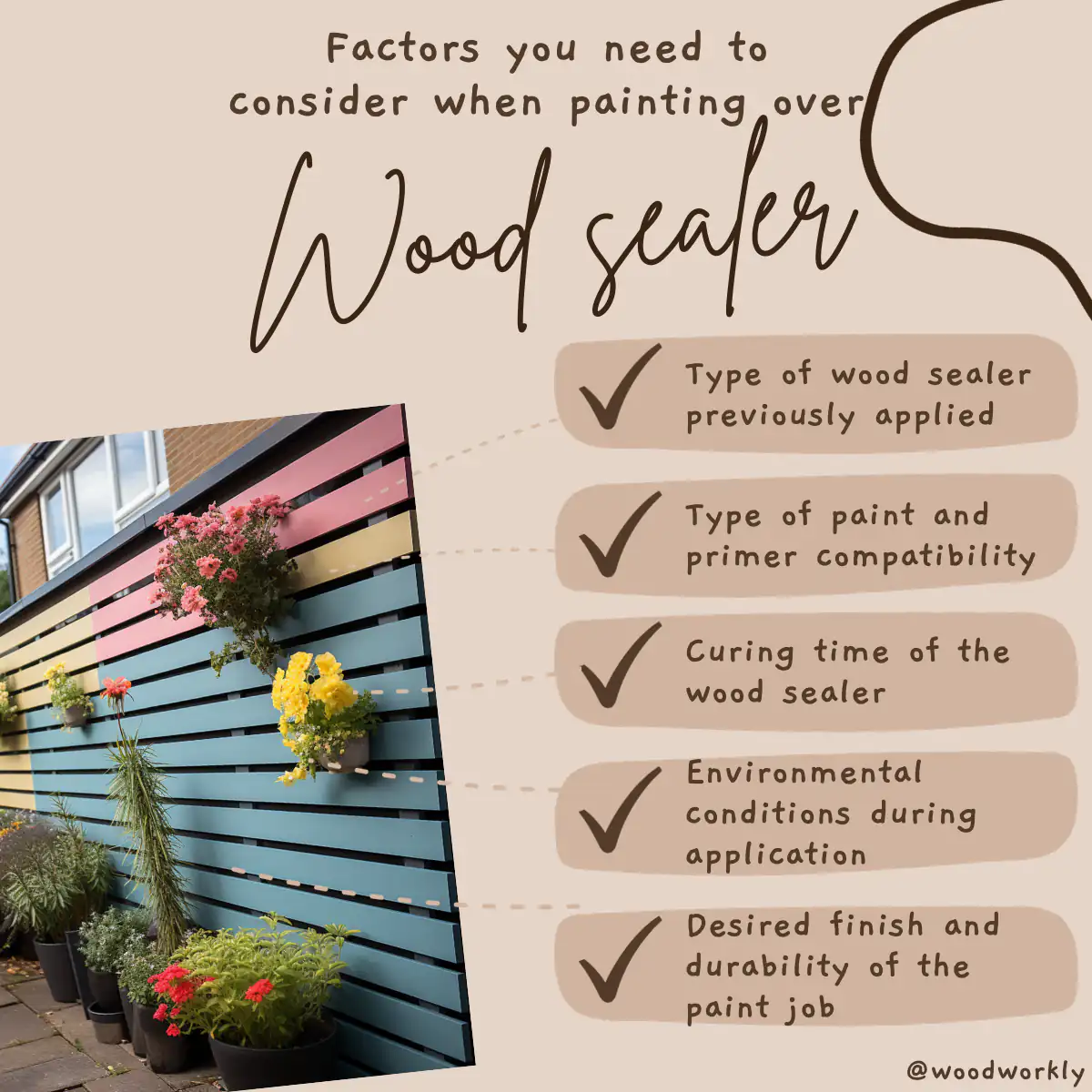
The Difference Between Sealer and Primer
Sealers and primers are both preparatory coatings used in a variety of applications, including painting and finishing, but they serve different functions and have unique properties.
Primers prepare the surface for painting such as filling fine cracks and pores in the surface, improving paint adhesion, and evening out imperfections in the surface, whereas sealers protect the paint from weathering, dirt, and other contaminants which provide a clear protective layer over the painted surface rather than changing the color of the surface.
Best Paint for Sealed Wood
This may vary depending on the sealer you have used. First, identify the type of sealer you used.
If you have used a water-based sealer, latex or acrylic paints are suitable for your surface.
If you have previously applied an oil-based sealer or a polyurethane sealer, for best results choose an oil-based paint.
Furthermore, enamel paints are extremely durable and are ideal for high-traffic areas or surfaces that may be exposed to moisture, such as kitchen cabinets.
They come in both oil-based and water-based formulations.
In some cases, a primer designed specifically for sealing and promoting paint adhesion can be used before applying your choice of latex or oil-based paint.
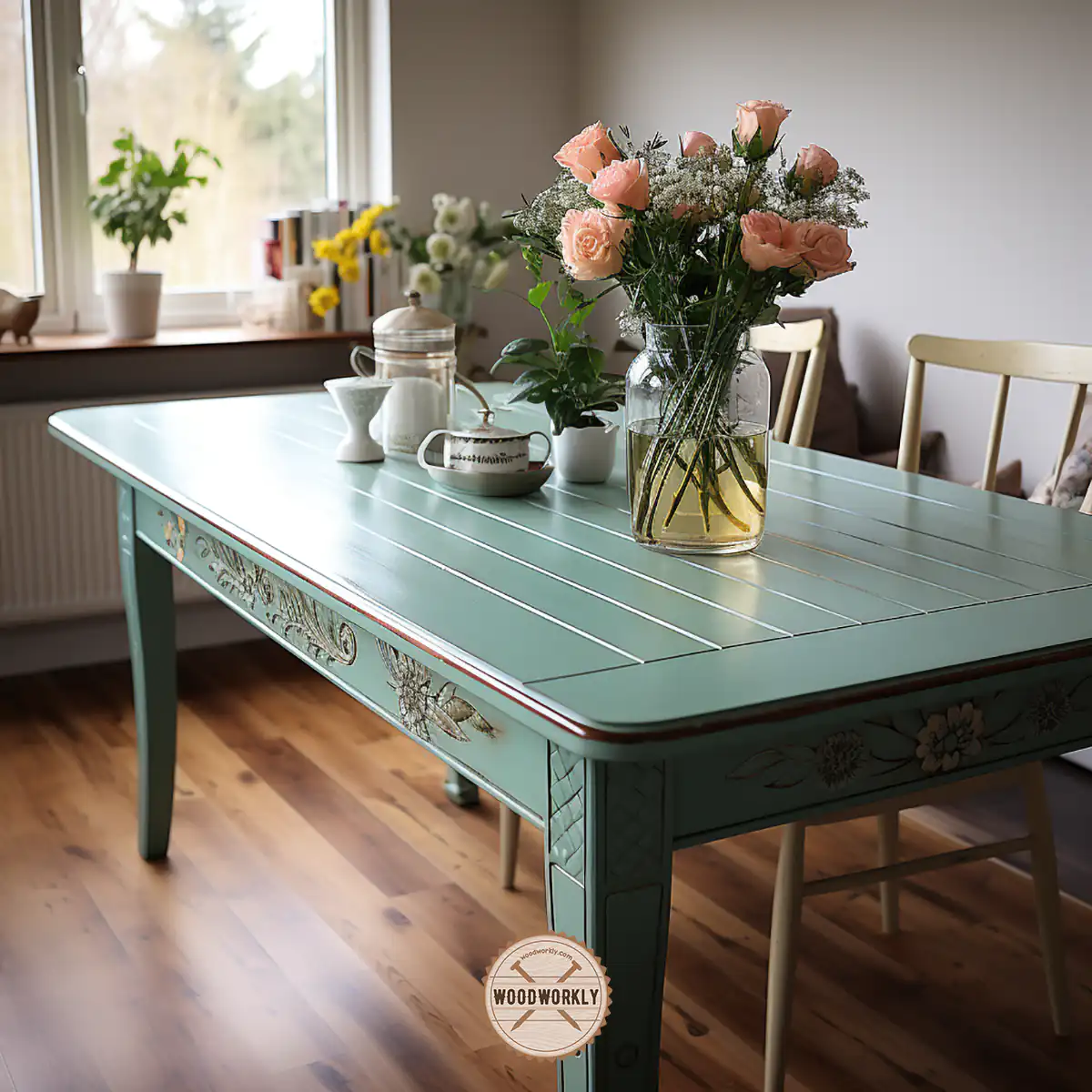
Supplies You Will Need to Paint Over Wood Sealer
First, gather all the tools and materials below mentioned.
Tools
- Paintbrushes, rollers, or sprayers
- Scraper
Materials
- Safety equipment (gloves, goggles, and a protective mask)
- Sandpapers with various grits
- Primer
- Paint suitable for the type of sealer (latex, oil-based, etc.)
- Mild detergent and water
- Mineral spirit (if necessary)
Make sure to grab the above supplies from quality manufacturers to gain promising results in the end.

How to Paint Over Wood Sealer?
Painting over wood sealer requires careful planning and execution to ensure a successful and long-lasting finish.
Here’s how to paint over a wood sealer step by step,
- Identify the Type of Previous Sealer
- Prepare the Sealed Surface
- Sand the Surface
- Dust and Clean Again
- Apply a Primer (If necessary)
- Paint the Surface
- Allow the Paint to Cure
- Seal the Finish
- Maintenance
Safety first! Wear safety gear before starting the process. Here I’ll give you a detailed description of each step.
1. Identify the Type of Previous Sealer
You can apply a few drops of mineral oil to the wood and if they are soaked in, it is an oil-based sealer.
A few drops of water should bead up on a freshly applied oil sealer and for a water-based one, it is vice versa.
To identify the wax coating, scrape the surface gently with a coin or your fingernail to identify a wax coating.
A wax finish is indicated by soft, non-wood shavings. Confirm with a small piece of sandpaper. Wax will clog it.
2. Prepare the Sealed Surface
To remove any dust, dirt, or grease, thoroughly clean the sealed wood surface with mild detergent and water or an appropriate cleaner.
If there is oily scum or stubborn stains on the surface, wipe it down with mineral spirits or a degreaser such as TSP.
Allow it to completely dry before moving forward.

3. Sand the Surface
To create a rough texture, lightly sand the sealed surface with fine-grit sandpaper (usually 120-150 grit). Sanding improves the adhesion of the paint.
After a few rounds of sanding, switch to a higher-grit sandpaper, such as 320-grit. This sandpaper will remove tiny defects and bumps in the finish.
Sand evenly and avoid over-sanding, which can damage the sealer. Sanding removes the glossy layer and creates pores in the finish, allowing the paint to penetrate and adhere.
4. Dust and Clean Again
After sanding, use a clean, dry cloth or a tack cloth to remove any dust and debris from the surface.
Read to know, Tack Cloth Alternatives!
Then, using a damp cloth, wipe the surface clean and free of any residual dust.

5. Apply a Primer (If necessary)
The necessity of a primer depends on the type of sealer and paint you intend to use. If a primer is required, consult the paint manufacturer’s instructions.
Apply a thin, even coat of primer and let it dry per the manufacturer’s instructions. Generally, the primer will take between 30 minutes and an hour to dry, but for best results.
Some wood sealers can be used as a primer!
This saves you both time and money. If you prefer this route, look for a sealer with a primer built in. For maximum protection, use two coats of a water-based sealer.
Since oil-based paints are typically more durable and last longer than latex paints. Only one coat of sealer is required when using oil-based paint.
6. Paint the Surface
Before using, you need to thoroughly mix or shake the paint. Begin by painting the edges and corners with a paintbrush.
Then, apply an even coat of paint to the larger areas with a roller or paint sprayer. Work in small sections to avoid the paint drying before it can be blended properly.
Apply additional coats as needed, allowing each coat to dry according to the drying times recommended by the paint manufacturer.
Two to four coats of paint are usually sufficient for good coverage.
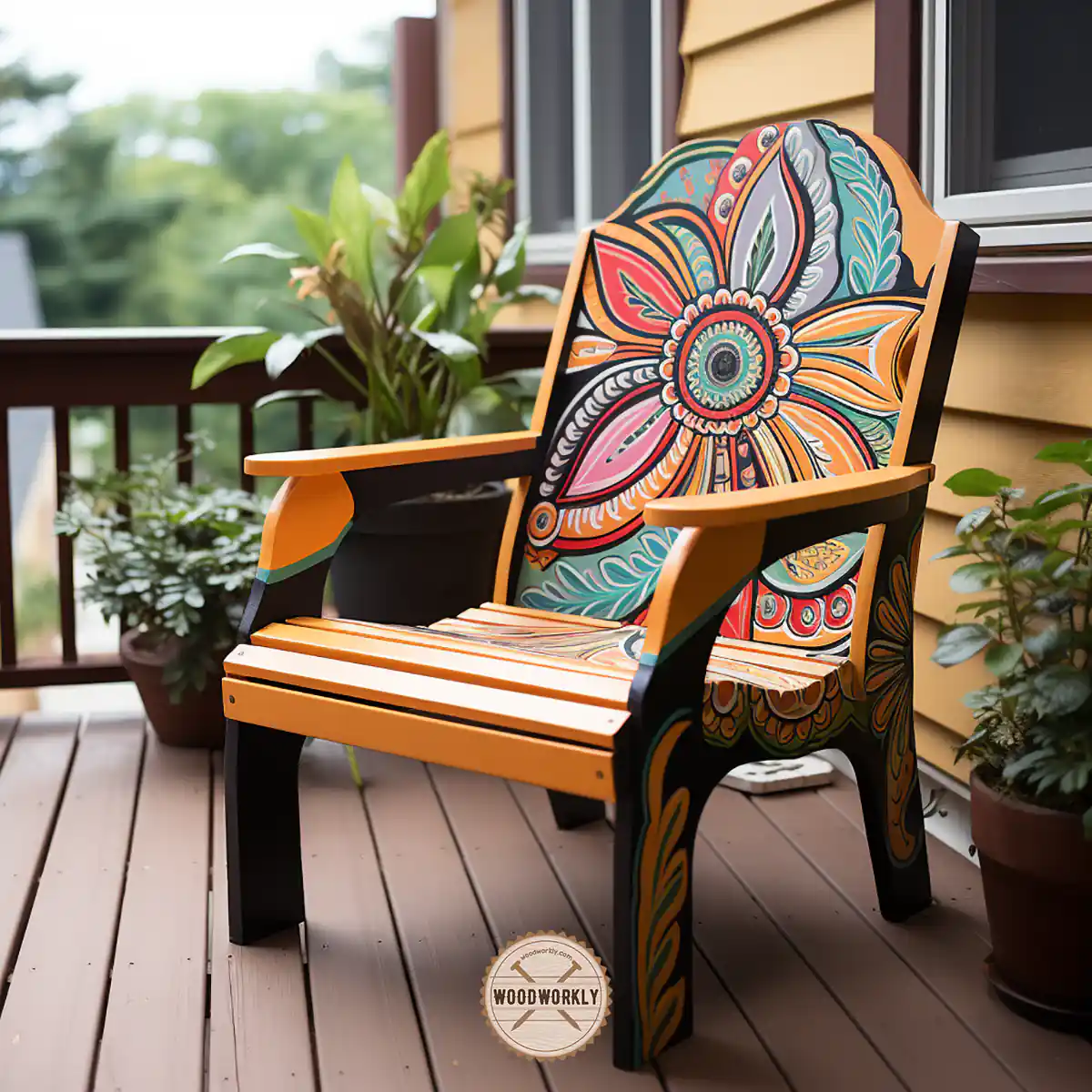
7. Allow the Paint to Cure
Allow the paint to dry and cure according to the manufacturer’s instructions.
This usually takes 24-48 hours, but it can vary depending on the type of paint and the environment.
8. Seal The Finish
Seal it after the final coat of paint has dried. Polyurethane sealants, for example, form a glossy layer that protects surfaces from moisture, water, and other damage.
You may need at least two coats of sealant for complete coverage.
Now you’re done!
9. Maintenance
Be prepared to perform routine maintenance, especially on surfaces prone to wear and tear to keep the paint job looking good, and touch up any areas that show signs of wear or damage.
That’s it folks! Now you know whether can you paint over wood sealer and how to do that properly using the right techniques.
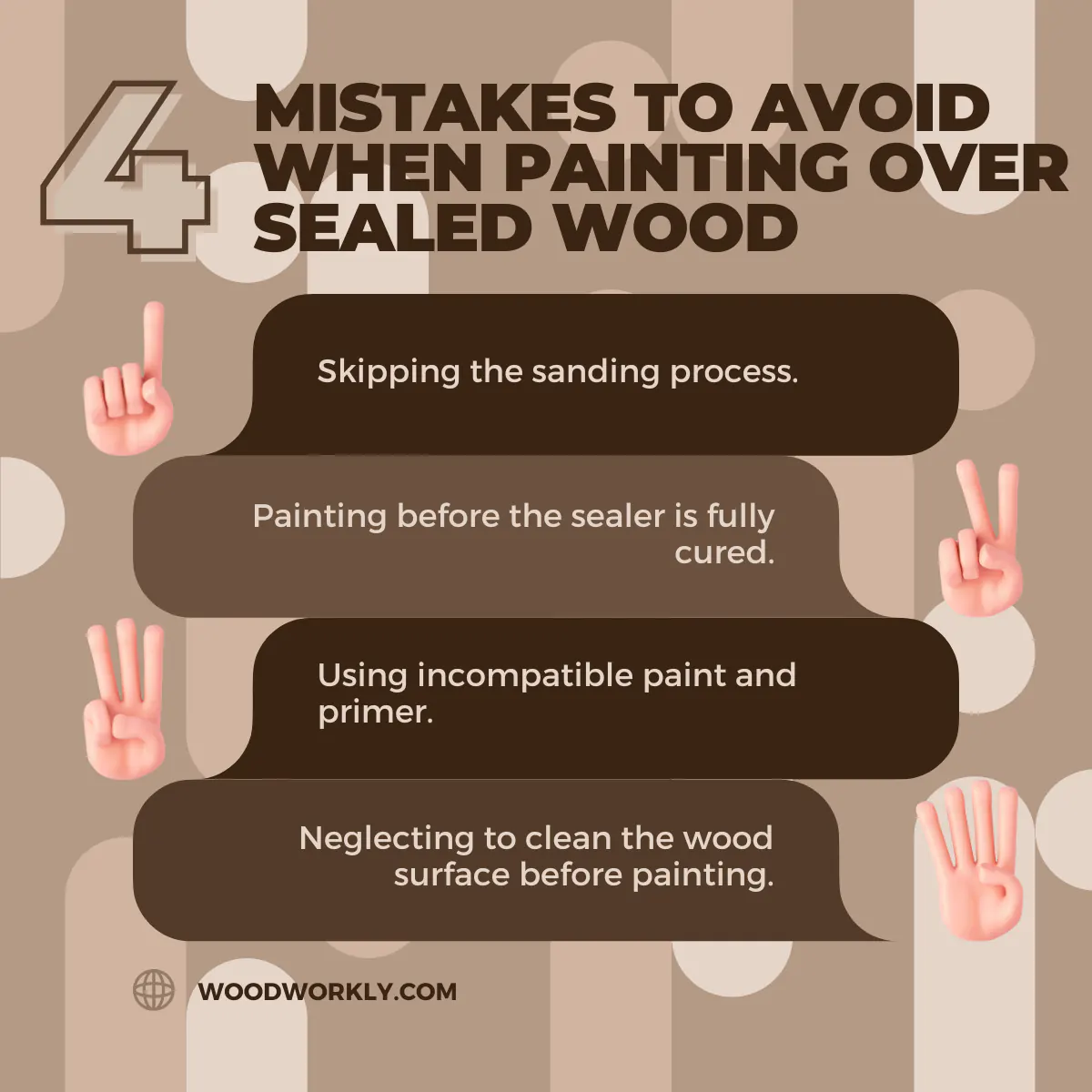
Now let me share with you several tips that I learned by painting sealed wood furniture for more than a decade which will help you to avoid any mistakes and get a nice, clean and smooth surface.
Some of the below tips were gathered from experts in my area by interviewing them several times.
So, just keep reading!
Tips for Painting Over Wood Sealer
Here are some important tips that I have experienced over the past decades for promising results.
- Perform a small test area before painting the entire surface. This will help ensure that the paint adheres properly and that the desired finish is achieved.
- Before you begin, inspect the sealed wood surface for any damage or defects. Check that the sealer is not peeling or chipping. If the sealer is damaged, it is best to remove it completely before painting.
- Use good paint brushes and rollers for a more even and smooth application. Good tools can make a significant difference in the result.
- Too much paint on your brush or roller can cause uneven application. Dip the brush or roller into the paint, then tap off any excess on the paint cans edge.
- Make sure to clean your painting tools and properly dispose of any waste materials according to local regulations.
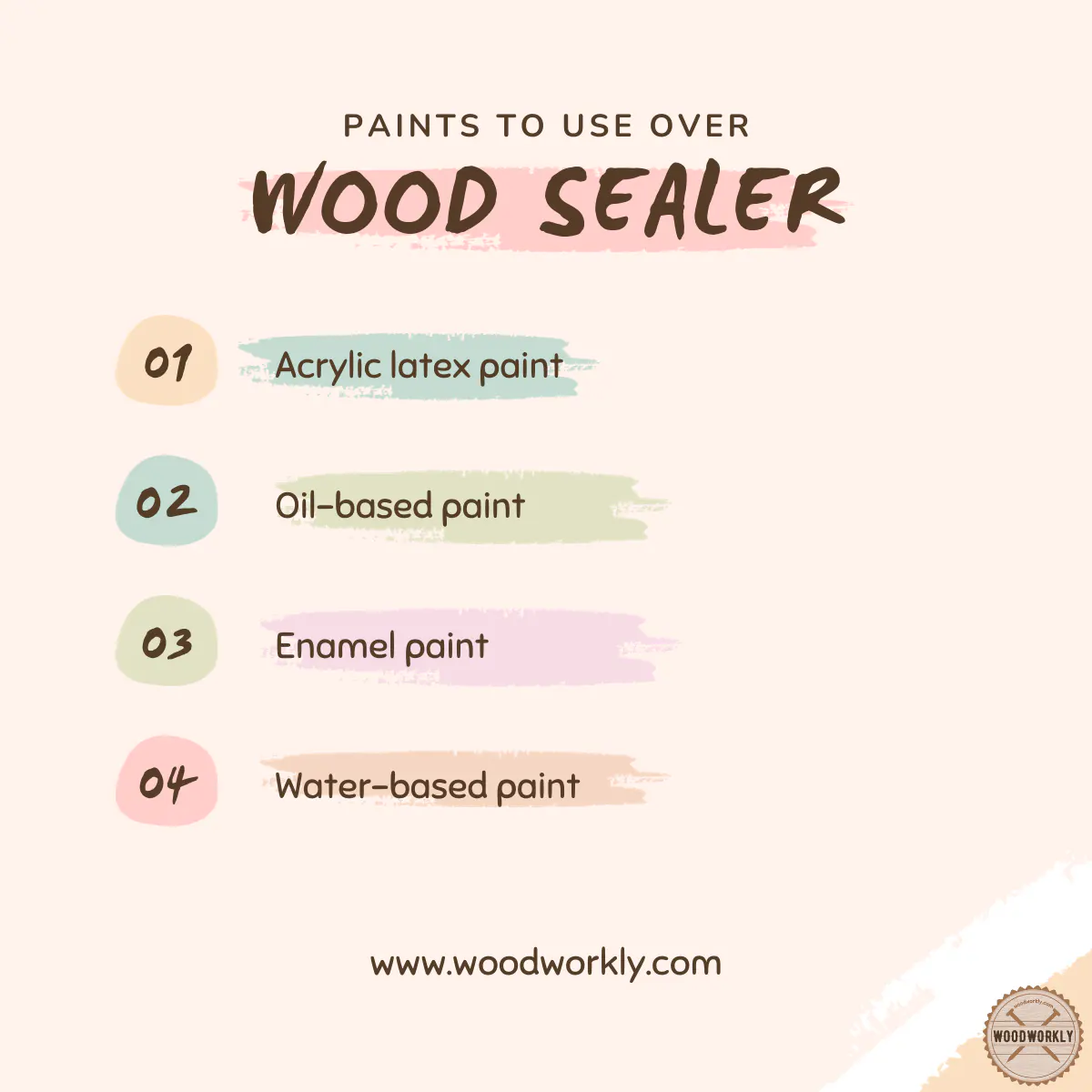
Is It Okay To Apply Oil-Based Paint Over Water-Based Wood Sealer or Vice Versa?
It is not acceptable to apply oil-based paint over water-based wood sealer.
Oil-based paint will not bond with the water-based sealer, will flake and peel off over time and will leave your wood exposed.
Applying water-based paint over oil-based wood sealer, technically, yes, but I wouldn’t recommend it.
The problem here is that if there is an oil-based sealer underneath, the water-based paint will not adhere well to the surface.
It’s just not an ideal combination, and your paint job will most likely suffer as a result.

Can You Paint Over Lacquered Or Varnished Surfaces?
Yes, you can paint on lacquered or varnished surfaces if they have been properly prepared.
To prepare the surface, sand down the lacquer or varnish coating to create a rough surface that allows the paint to adhere effectively. However, remember to use a primer before applying the paint to help it adhere.
Can I Paint Over A Sanding Sealer?
Yes, you can paint over a sanding sealer, but you must take the proper precautions to ensure a successful and long-lasting painting.
Sanding sealer is commonly used to prepare wood surfaces for painting and provides an excellent foundation for paint adhesion.
So, let’s answer some frequently asked questions.
FAQs
Is it possible to paint directly over sealed wood?
You cannot paint directly over sealed wood without proper preparation; the sealer creates a moisture-resistant surface that paint cannot adhere to without sanding and priming first.
How long should I wait before painting over wood sealer?
The wait time before painting over wood sealer varies, but it’s generally recommended to allow the sealer to cure fully, which could be anywhere from 24 hours to a full month, depending on the product.
Do I need to sand sealed wood before painting?
Yes, sanding sealed wood is necessary to create a rough surface for the paint to adhere to and to remove the glossy layer that repels paint.
What type of paint works best over wood sealer?
Acrylic latex paint is often recommended for its good adhesion over primed, sealed wood, though oil-based paints can also be used with the right preparation and primer.
Can I use a wood sealer as a primer before painting?
Wood sealers are not typically recommended as a primer for paint; a dedicated primer suited to the paint type is necessary to ensure proper adhesion.
Will painting over wood sealer affect its waterproofing properties?
Painting over wood sealer can compromise its waterproofing properties as sanding the sealer before painting may remove its top protective layer.
Can I apply wood stain over a sealed surface?
No, wood stain is a penetrating finish and will not adhere properly to a sealed surface which is designed to repel moisture and other materials.
What kind of primer should I use over sealed wood?
The choice of primer depends on the paint type; water-based primers are suitable for latex paints, while oil-based primers are ideal for oil-based paints.
How can I tell if my sealer is fully cured and ready for painting?
Check the manufacturer’s instructions for curing times, and you can also test the surface by touching it to see if it’s tacky or by trying to stick a piece of masking tape to it; if it doesn’t stick, the sealer is not fully cured.
What is the best way to apply paint over a sealed wood surface?
The best way is to clean the surface, sand it, apply the appropriate primer, and then paint with the chosen paint type, using a brush, roller, or sprayer for even application.
Did I cover all you wanted to know about: Can You Paint Over Wood Sealer
In this article, I deeply discussed whether can you paint over wood sealer how to paint wood that is sealed already without damaging its protection, and what steps you need to follow to make the paint layer adhere well onto the sealed surface.
Yes, you can paint over sealed wood, but direct painting over sealed wood will cause it to bubbling, flaking, or chipping. Because the paint will not adhere to sealed wood materials since sealants are designed to seal out moisture and prevent paint adhesion. You need to apply a primer before painting and apply a sealer at the last step.
Furthermore, I’ve answered some frequently asked questions as well.
Hope you learned everything you wanted to know regarding painting over wood sealer. Now it’s time to give this method a try and practice well to gain some experience.
Don’t forget to reach me out to if you have any confusion you have about this project. Happy woodworking